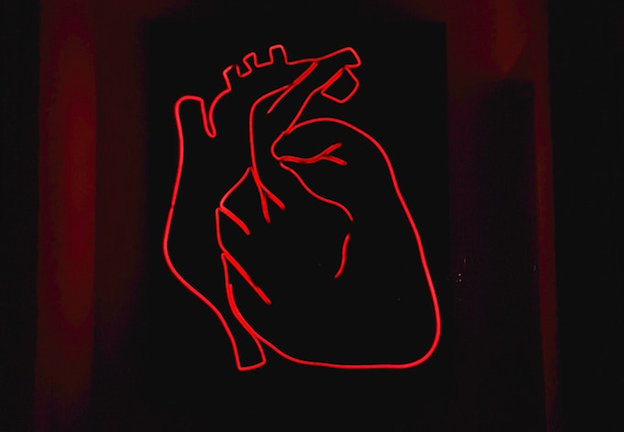
The vast majority of medical devices currently rely on some form of battery to run. As devices become more functional and complex, and therefore consume more power, creating batteries capable of powering them has become one of the major barriers to continued development and innovation.
There is also an issue regarding reducing the size of batteries without sacrificing their power, a situation that has been hindered further by limited financial incentives for device manufacturers to research and develop new ways to power devices.

Discover B2B Marketing That Performs
Combine business intelligence and editorial excellence to reach engaged professionals across 36 leading media platforms.
The challenge of battery-powered pacemakers
One device where new, innovative alternatives to battery power are urgently needed are pacemakers.
An editorial in the British Medical Journal (BMJ) written by Royal Devon and Exeter Hospital consultant cardiologist John Dean and Eastbourne Hospital consultant cardiologist Neil Sulke noted that surgically replacing pacemakers, which usually has to be done every five to ten years because the battery has no more power, causes a serious risk of complications, including life threatening infections.
More than half of patients with pacemakers require a replacement procedure and between 11% and 16% need multiple replacements.
Researchers from Dartmouth College, in collaboration with clinicians at the University of Texas in San Antonio, have created “devices [which] will be self-charged by the energy harvested directly from the human body,” as explained by study lead and Dartmouth professor of engineering John Zhang.

US Tariffs are shifting - will you react or anticipate?
Don’t let policy changes catch you off guard. Stay proactive with real-time data and expert analysis.
By GlobalDataThis approach “could significantly extend the lifetime of implantable medical devices” in the words of Dartmouth research association and first author of the study Lin Dong.
As well as “remove the requirement for surgeries just to replace the battery,” which both “creates medical complications…and additional healthcare expenses”, according to Zhang.
Zhang continues: “We developed a new design for energy harvesting that can be miniaturised and integrated within existing pacemakers. It uses dual-cantilever structured thin films made of piezoelectric materials for effective conversion of kinetic energy into electrical energy.”
Modified from the pacemaker, the device creates electrical energy by harnessing kinetic energy from the heart through the lead wire attached to it and converts it into electricity to charge the batteries.
The device is biocompatible with patients because the device also contains a thin polymer piezoelectric film (PVDF).
Dong notes: “The excellent biocompatibility of PVDF has already been confirmed and verified through in vivo tests in earlier work.”
The Dartmouth team are using their funding from a five-year transformative research award from the National Institute of Health to demonstrate the efficacy and safety of the devices in large animal models.
Zhang says: “We have completed the first round of animal studies recently with great results which will be published soon.
”The next stage will be long-term animal studies, which Zhang expects will be “the outcome of the two remaining years of NIH funding,” followed by clinical studies in humans.
Wirelessly powering vital monitoring sensors
Wearable monitoring devices allow the continuous monitoring of physiological indicators, however, they commonly require multiple sensors on the skin, which can be bulky and heavy depending on the size and weight of the battery used, as well as hard wired connections and rigid interfaces, according to the 2019 Chang et al paper in the Biomedicine journal.
This is invasive and creates risk of injury and infection, which is particularly an issue as those patients most in need of vital signs monitoring are new born babies and elderly patients.
Researchers at Northwestern University in the US have developed a battery-free soft skin path that can wirelessly gather and analyse patient’s data, such as pH, chloride, glucose and lactose levels, by testing sweat compounds.
Main architect of the device and Northwestern University professor of biomedical engineering John Rogers explains: “Our device is the first clinical-grade monitoring system with skin-like form factor.”
It allows successful “balancing [of] the need for powering the sensors and their wireless data communication links with the need to maintain soft, skin-like form factor, and thin, lightweight construction.”
It is powered by “wireless power transfer, based on technologies that are similar to those used for wireless payments and RFID tags”.
Rogers explains: “The devices can be powered continuously while worn on the skin.”
Although the device eventually fills up with sweat, the channel system is separate from the electronics and so can be swapped out without removing the device from the patient.
The vital signs monitoring role of this device has particular clinical applications for “screening for cystic fibrosis and potentially as a device to track the health status of patients with kidney disorders,” according to Rogers.
Currently measuring the chloride concentration of cystic fibrosis patients relied upon one time measurement by a large, invasive device.
Rogers’ team are currently testing the device “on human subjects in several areas in parallel,” including in neonatal intensive care units, which they are planning to “expand to include deployments into the developing world starting in April or May.”





